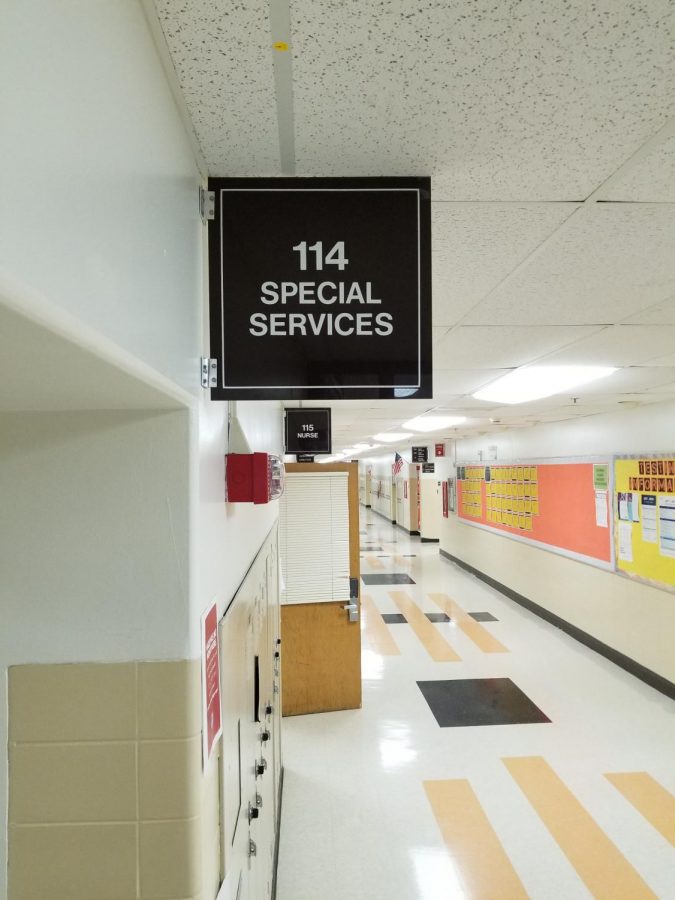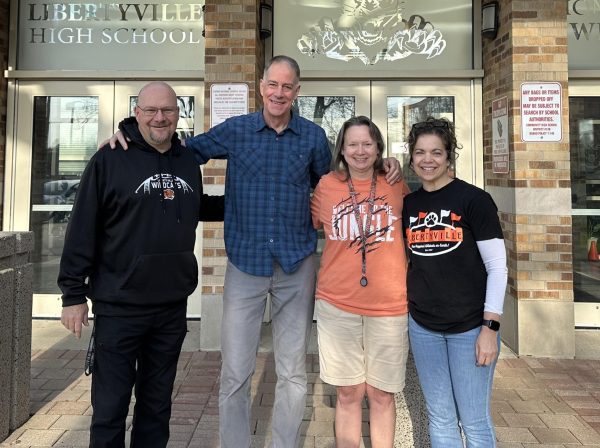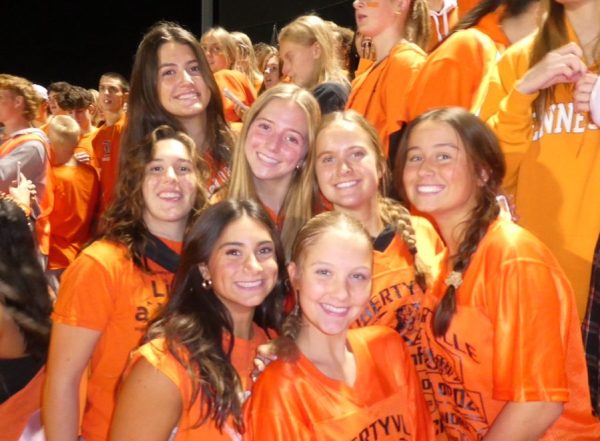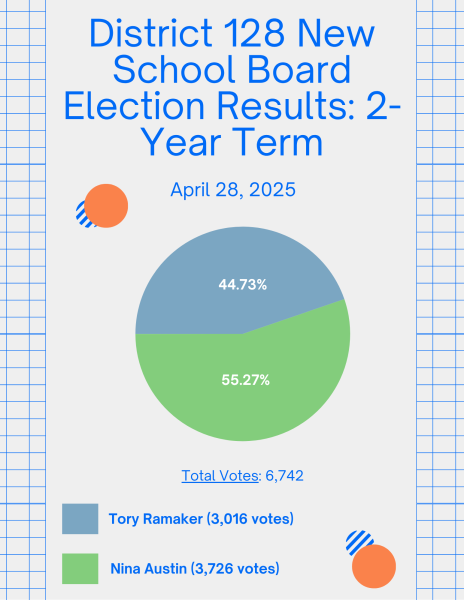An All-Inclusive Education
Although it is one of the lesser-known departments at Libertyville High School, the Special Services Department accommodates 8 percent of all LHS students and caters to their individual needs, providing students with educational and social support plans throughout their time at Libertyville.
The department is not only composed of teachers, but also psychologists, social workers, speech and language pathologists, teachers’ assistants and physical aides, all of whom make sure students with disabilities can fully access the curriculum within their classes.
According to Ms. Karin Morgan, the supervisor of the Special Services Department, students qualify for special education after an initial evaluation is completed by school staff. The evaluation process is led by a school psychologist, but depending on the student’s disability, a social worker, language pathologist, physical therapist or any other staff member may also be part of the evaluation.
The evaluation process can take up to 60 school days. Some examples of what this process can evaluate include specific learning disabilities (SLD), Autism Spectrum Disorder, emotional disabilities, speech or language impairments, visual and hearing impairments, intellectual disabilities and traumatic brain injuries.
IEP & 504
According to Ms. Morgan, there are two different types of plans through which students who qualify for educational accommodations can receive aid from: a 504 plan and/or an Individualized Education Plan (IEP).
A 504 plan is something for students within the general education population and is referred to as an accommodation plan. This type of plan is for students outside of special services who are typically in all general education classes but are provided with various accommodations that help them learn the curriculum in the way that is best for them. Within a student’s 504 plan, they may qualify for services such as extra time on exams, preferential seating, alternate testing locations, diabetic care, certain scheduling requests or copies of classroom notes.
On the other hand, an IEP is a higher level of support. While a 504 deals with the accommodations and tools that help within the classroom, an IEP is the support students receive beyond that. Students who qualify for a 504 plan have a decision team, which decides whether or not the students can be successful with classroom accommodations provided through their 504 plan or if the student needs additional accommodations and services.
Students with an IEP have a team created to help them, which is known as an IEP team. It is composed of a general education teacher, a special education teacher, their parents, that student and a Local Educational Authority (LEA) representative. IEP teams look at a student’s educational levels, their ability to manage their emotions and the type of aid they qualify for under their 504 plans. Together, parents, teachers and students create individualized goals that are manageable, yet challenging for a student, pushing them to continuously work towards these goals all year.
IEP meetings are required at least once a year, and the Special Service Department is in charge of providing quarterly updates to parents every nine weeks with what progress their student has made in reaching their goal. Members of the IEP team closely monitor a student’s progress throughout the academic year and determine whether or not they’ve reached their goal. At the beginning of every school year, or once noticeable progress has been made in reaching a goal, the team then starts the process over again and decides whether or not the student is going to continue with the same goal or make a new one.
Accommodations
Working with so many students, the Special Service Department works to create individualized aid for all students, providing them with appropriate accommodations based on their needs. Ms. Morgan has worked as head of the Special Service Department at Libertyville for the past five years. Throughout her time, Ms. Morgan has seen the department grow in its ability to accommodate students of all learning levels: “I would say we are successful at identifying what the [student’s] needs are and then developing the programs that we need to help them.”
Class sizes in special education tend to be much smaller than those in general education. Special education English teacher Mrs. Susan Price sees many ways in which her students benefit from these smaller classes: “I think a teacher has a much more clear view if students are grasping and getting [the curriculum] or [if they] need it repeated, or are challenged by it in a different way. You’ve got a smaller class and a wider range of abilities.”
Mrs. Price believes her smaller class sizes make it easier for her to attend to a student’s individual needs, allowing her to assess how she can help them grasp the material best. In doing so, she is able to work with a student more rigorously by playing into their strengths, with the hope that these strengths will eventually allow students in special education courses to perform well in general education courses. One unique service that the Special Services Department offers is the Flex program. Flex is a short-term program for students who need to master a few learning skills, such as reading comprehension, writing or speaking skills, before they can go back into their own classes.
Another service that is offered to students in the special education program is ninth hour. Ninth hour is a period of study hall at the end of the traditional eight-period day where students can come in for extra help.
“It’s a great opportunity if kids need more guidance, assistance, or just more time to really focus and do their work,” stated Mrs. Price.
Need-Based Classes
The curriculum in special education springboards from the curriculum in general education. In general education, there are AP and honors classes as well as single and team-taught classes. In special service education, there are instructional classes, which feature a modified curriculum, but are still very similar to the general education curriculum.
One type of class that students with learning disabilities are commonly placed in is co-taught classes. These classes have two teachers in them, allowing students to receive more individualized aid in their areas of struggle. In co-taught classes, the curriculum is taught at a different pace, providing students with additional support as needed.
According to Mrs. Price, students with learning disabilities and ADHD typically need the curriculum to be restructured and modified so that they can best understand the material. In her World Literature English class, she identifies what her students’ strengths utilizes them so that her students can always be learning at their fullest potential.
“Sometimes it’s trying to present information a little bit differently throughout a small modality where [students] have more of a strength. Presenting it to a more auditory level rather than a visual level, or visa versa, may help you reach a student more easily or more successfully,” she said. “[In general, just] playing to their strengths.”
Another special education class that many students receive aid from is Tutorial. According to Ms. Morgan, “[Tutorial is] a resource period where [students] have a case manager [who] knows what their disability is and what classes [they] have, and helps [with] organizing homework [and] understanding what [a student has] learned that day in class. [A student’s case manager is their] go-to person here.”
While at times students are able to use their Tutorial period as a guided study hall, the time is often spent working towards the goals outlined in their IEP. For example, if a student has a reading disability, they will oftentimes spend their tutorial period doing reading interventions or learning new strategies that will ultimately improve their reading skills.
Transition
After Libertyville, there are many different paths for students, for those both with and without disabilities. For students who have utilized the Special Services Department, there are a number of options: they may go to a four-year university and access accommodations or support services there; they may attend a specific institution that has even more services and a case manager there; or, they may attend a transition program offered through District 128.
“For those that aren’t ready for a college classroom or curriculum, we have a transition program where students can continue to be a D128 student, but can move on to a program [that] focuses on job, life and independent living skills,” Ms. Morgan explained.
This program is for Libertyville High School and Vernon Hills High School graduates and is available to them until they are 22 years old. There are transition programs offered through two sites: College of Lake County and SEDOL, the Special Education District of Lake County.
Mrs. Stephanie Henrichs, the transition coordinator at LHS, explained that the program provides different services for each person involved; it is a very individualized program. As transition coordinator, her job is to help students, whether they are in special services or not, explore different options for life after high school.
“There is a stigma around [transition], around tech campus, which is unfortunate. We live in a town and society that emphasizes college after high school, when in reality, a four-year university is not the path for everyone,” Mrs. Henrichs said.









